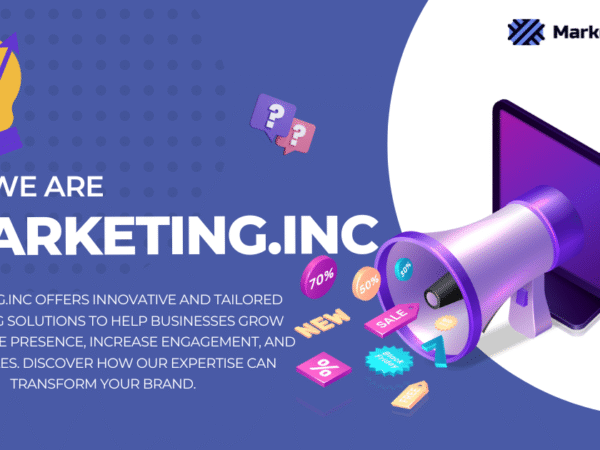MVP or Minimum Viable Product, is about swiftly creating a solution to your customers’ core problem, prioritizing speed over perfection. This approach encourages feedback gathering and iterative improvements until you’ve crafted a product that resonates with your users. While initially daunting, the MVP method is a potent tool for meeting customer demands.
It revolves around customer feedback and data, gaining recent traction in the startup scene. MVP is grounded in the belief that customer input is the most direct route to enhancing products, making it a vital tool for businesses aiming to deliver top-notch products. Let’s learn more about essential principles, effective tools, and strategic insights for building your MVP and advancing rapidly.
Key Principles of a Minimum Viable Product
The principles of MVP form the foundation for successful product development. Centered on understanding and addressing customer needs, an MVP focuses on delivering essential features while maintaining usability. It serves as a testing ground for gathering valuable user feedback, emphasizing the iterative nature of development and the importance of speed in reaching market validation. Let’s check some of the key principles of MVP:
Customer-centric Development:
Develop the MVP with a strong focus on understanding and addressing customer needs. Provide a solution that solves a real problem and delivers value to the target users. Customer feedback and engagement are essential for guiding the product’s direction and ensuring its relevance.
Core Functionality Focus:
Prioritize delivering the core features and functionalities necessary to address the primary problem or need of the target users. Strip down the product to its essential components, avoiding unnecessary complexities or extra features.
Self-Contained Solution:
Despite its minimal nature, ensure the MVP is a product in itself. It should be a self-contained solution that users can interact with and provide feedback on. The MVP should have a clear value proposition and purpose.
Viability and Usability:
The MVP should be viable, meaning it should be functional and provide value to the users. While it may not have all the desired features, it should offer a usable solution to the problem at hand. Demonstrate the product’s potential and attract early adopters.
Continuous Feedback Loop:
Gather feedback and learn from user interactions. Use the MVP as a testing ground to validate assumptions, compile insights, and identify areas for improvement. The focus should be on learning from real user data and behavior.
Iterative Development Approach:
Clarify that an MVP is not the final version of the product; rather, it’s the starting point for iterative development. The feedback and insights from users must be used to refine and enhance the product in subsequent iterations. Each iteration builds upon the previous one, gradually improving and expanding the product’s capabilities.
Emphasis on Speed:
Highlight the emphasis of an MVP on speed and getting to market quickly. The goal is to validate the product concept and gather feedback as early as possible. By focusing on the core functionality and avoiding unnecessary features, development time can be minimized, allowing for rapid iteration and improvement.
Efficient Resource Allocation:
Developing an MVP requires efficient allocation of resources and cost optimization. Prioritize the essential features and functionalities to avoid unnecessary expenditures. The focus is on building a lean and effective product that minimizes waste and maximizes value.
Importance of a Minimum Viable Product for Your Startup Journey
Before launching a product, it’s important to test whether it meets the needs of your target audience. This is where a Minimum Viable Product comes into the picture. The MVP aims to validate your initial assumptions about your product by testing it in the market. It’s important to test your product first before investing a lot of time and resources in it. If the product doesn’t meet the needs of your target audience, it could be a waste of resources.
An MVP will allow you to better understand your target audience and their needs. Once you have their attention, you can use different methods to reach them effectively. It’s important to remember that getting negative feedback can help guide you towards a better solution. The goal is to reach validation that your product meets the needs of your target audience. MVPs help you better understand your users, your product’s capabilities, and the best approach to achieving success in the market.
Building a Minimum Viable Product (MVP) is Crucial in Your Startup Journey for Several Compelling Reasons:
- Validation of Ideas: An MVP allows you to test your business idea quickly and cost-effectively. It helps verify whether your product or service addresses a genuine need in the market.
- User Feedback: By launching an MVP, you can gather valuable feedback from real users. Understanding user reactions and preferences early on is essential for refining and improving your product.
- Risk Mitigation: Developing a full-fledged product without validation increases the risk of failure. An MVP minimizes risks by providing insights before substantial investments are made.
- Time and Cost Efficiency: Focusing on essential features in an MVP accelerates the development process. It helps allocate resources efficiently and prevents unnecessary expenditures.
- Iterative Development: An MVP serves as the foundation for iterative development. Feedback from users guides subsequent iterations, ensuring continuous improvement.
- Market Fit Assessment: Launching an MVP helps assess the product-market fit. It enables you to understand how well your product aligns with the needs and expectations of your target audience.
- Competitive Advantage: Getting to market quickly with an MVP provides a competitive edge. It allows you to establish a presence and attract early adopters ahead of competitors.
- Resource Optimization: Building an MVP requires efficient allocation of resources. This ensures that you focus on the most critical aspects of your product, avoiding unnecessary complexities.
- Adaptation to User Behavior: MVPs facilitate learning from real user data and behavior. This knowledge is crucial for adapting your product to meet evolving user needs and market trends.
- Strategic Planning: An MVP forces you to plan strategically and prioritize features based on their importance and urgency. It ensures a clear roadmap for your product’s development.
In essence, incorporating an MVP into your startup journey is a strategic move that enhances your chances of success by providing invaluable insights, minimizing risks, and optimizing resources.
Common Misconceptions Associated with MVPs
Common misconceptions about MVP often obstruct the effective implementation of this crucial product development approach. Addressing these misconceptions is vital for entrepreneurs aiming to harness the power of Minimum Viable Products. Let’s explore and debunk these misconceptions to ensure a clear understanding and successful integration of the MVP strategy into your startup journey.
- Incomplete or Low Quality: Contrary to belief, an MVP should be functional, user-friendly, and offer a valuable experience.
- Exclusively for Startups: MVPs are utilized by both start-ups and established businesses to validate ideas, test features, and explore new markets.
- End of Development: Building an MVP is just the beginning; continuous refinement and adaptation are crucial for long-term success.
- No Need for Feedback: Despite its minimal version, an MVP requires user feedback for improvements and iteration.
- Quick and Easy: Building an MVP demands careful planning, development, and testing, challenging the notion of a quick and easy process.
- Guarantee of Success: While an MVP is vital, success hinges on ongoing iteration, refinement, and adaptation based on user feedback and market dynamics.
- Incorporating All Features: An MVP should focus on simplicity, showcasing only core features essential to validate the product’s viability.
- Cost-Cutting Measure Only: While managing costs, the primary purpose of an MVP is to validate product-market fit and reduce the risk of building an irrelevant product.
The Need for Prioritization of Product Features and MoSCoW Method
Prioritizing features in product development is essential for success. The MoSCoW method provides a structured approach:
- Must-Have: Essential features critical for the product’s primary purpose. Without these, the product wouldn’t be considered viable.
- Should Have: Important features enhancing functionality and user experience. Inclusion is desirable within time and resource constraints.
- Could Have: Nice-to-have features beneficial but not critical for MVP. Consideration for future iterations or updates.
- Won’t Have: Explicitly excluded features from the MVP scope. Not included due to resource limitations, time constraints, or other reasons.
Using the MoSCoW method ensures teams prioritize critical aspects first while allowing flexibility for future improvements.
Effective Tools to Build an MVP:
When creating a Minimum Viable Product, you can utilize these tools to streamline development and prototype quickly:
Prototyping Tools:
- Figma: Design and prototyping tool for interactive UI/UX prototypes.
- Adobe XD: Design and prototyping tool with interactive features.
- Sketch: Vector-based design tool with plugins for prototyping.
Backend Development:
- Express.js: Minimal and flexible Node.js web application framework.
- Django: High-level Python web framework for scalable applications.
- Ruby on Rails: Popular Ruby-based framework for web applications.
Database Systems:
- MongoDB: NoSQL database storing data in flexible, JSON-like documents.
- PostgreSQL: Powerful open-source relational database management system.
Front-end Development:
- React: JavaScript library for building user interfaces.
- Vue.js: Progressive framework for building user interfaces.
- Angular: TypeScript-based framework for web applications.
Hosting and Deployment:
- Netlify: Hosting platform with easy deployment for static websites.
- Heroku: Cloud platform supporting various programming languages.
- Firebase: Development platform offering hosting, database, and authentication.
AI Stack:
- TensorFlow: Open-source machine learning framework by Google.
- PyTorch: Deep learning framework widely used for research and production.
Analytics:
- Google Analytics: A widely used platform for tracking website and app statistics.
- Mixpanel: User analytics and engagement platform with advanced tracking.
- Amplitude: Product analytics platform for understanding user behavior.
Strategies for Rapid MVP Development
Here are effective strategies for quickly developing your Minimum Viable Product (MVP):
Minimize Distractions:
- Focus solely on essential features, avoiding unnecessary complexities.
- Reducing noise and distractions increases the likelihood of MVP success.
Identify and Complete Dependencies:
- Identify and efficiently complete any dependencies necessary for MVP launch.
- Clear dependencies facilitate better planning and prioritization.
Simplify UI Design:
- Prioritize a simple and intuitive user interface (UI).
- Avoid complex graphics or intricate interactions to expedite development.
Early Product Shipping:
- Focus on shipping the MVP as soon as possible.
- Real user feedback obtained early aids in identifying and resolving issues quickly.
Strategic Planning:
- Recognize that a successful MVP requires strategic planning.
- Rushing through planning can lead to incomplete requirements and missed opportunities.
Integrate User Feedback:
- Incorporate user feedback into your iteration process.
- Responding to user suggestions quickly helps address pain points.
Select an Efficient Tech Stack:
- Choose a technology stack you’re familiar with to expedite development.
- Sticking to known technologies speeds up the overall MVP creation process.
Keep the Goal in Mind:
- Define the minimum version required for user feedback.
- Prioritize the most important features aligned with your goal.
Embrace Imperfections:
- Allow for mistakes and imperfections in your MVP.
- Learning from these is a crucial part of the development process.
Prioritize Core Features:
- Prioritize the most important features essential for the core user experience.
- Cutting out non-essential elements speeds up the MVP launch.
Conclusion:
The rapid development of MVP is crucial for startups seeking quick feedback and validation. By applying these strategies, entrepreneurs can save time and resources while delivering a functional product for user testing and iteration. Remember, MVP development is a continuous learning and adaptation process.
Our team of experts at DSHG Sonic is dedicated to assisting startups in building MVPs that will provide the momentum you need to achieve your goals. We understand what it takes to create an excellent MVP from ideation to execution, and we’re here to guide you every step of the way. You’re welcome to schedule a free consultation call with us here!








